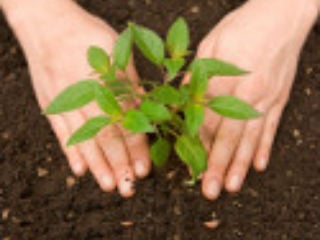Doctors, physicians, medicines will not be available in the future during the world war. Ayurveda can be our saviour during such times. In this article, let us understand the information about ‘How to collect medicinal plants and herbs which grow naturally’. Sanatan’s text on this subject will be published soon. This book will give you a brief overview of ‘How to collect and preserve medicinal plants and Herbs’.
1. Collect and preserve medicinal herbs now !

Vaidya Meghraj Paradkar
‘Every year, due to the grace of Deity Varuna, innumerable medicinal plants naturally grow in the rainy season. Some of these plants dry up 1-2 months after the end of monsoon. These plants are not available until the next rains. Therefore, such plants should be collected now.
2. Benefits of collecting and preserving herbs
Some of the medicinal plants mentioned in this article are also available in stores that deal with ayurvedic medicines. But it is always better to collect from nature than to buy them from stores. There is no guarantee that the herbs you buy will be fresh. If the plants are old, their effectiveness is lessened. Most of the medicinal plants sold in the market are adulterated. They also contain dust, dirt and other debris. Conversely, when we collect herbs ourselves, we are assured of freshness and purity. We can wash such plants, so they stay clean. If the plants are collected, dried and stored in an airtight container, they can be used for about 1 to 1.5 years.
3. Approach knowledgeable people from villages or known ayurvedic practitioners to identify the plants
Most of the elderly people in the village are knowledgeable about medicinal plants. Make sure to identify these plants by showing them pictures of the plants in this article and asking them where they can be found. If possible, get help from a Vaidya you know. Ayurvedic Vaidyas are familiar with medicinal plants and know how to use them. A skilled vaidya can use the same herb effectively to treat various diseases. In addition to the plants mentioned in this article, if an expert mentions any other plants, they should also be stored in appropriate proportions.
4. Some common instructions about collecting herbs
A. Pray before leaving the house to collect herbs and express gratitude when you come home.
B. Herbs and plants growing in dirty places, sewage, swamps, cemeteries etc. should not be collected. The place where herbs are growing should be clean.
C. There should be no factories in the area that emit pollutants, especially those that emit harmful chemicals.
D. Do not collect plants that have fungal disease, have been attacked by pests or diseased plants in general.
E. Medicinal plants on poisonous trees should not be collected, e.g. Do not collect giloy that is growing on a strychnine (Strychnos nux-vomica) tree.
F. Do not collect plants from areas where you perceive distressing vibrations.
G. Plants should not be collected without proper identification. Using the wrong plant can have harmful effects. Therefore, the plant should be identified by a knowledgeable person.
H. Medicinal plants should not be collected after sunset.
5. Procedure for collecting herbs
A. Collected plants should be tied together with twine, packed in bags. Fix a label with the name of the plant immediately.
B. After bringing the plants home, wash them well. If the plants have flowers and seeds, separate them so that they are not washed away. If the plant has been uprooted, its roots should be cut off with scissors and separated from the plant. Since the roots are covered with soil, they should be washed separately so that the soil does not get into the other plant parts.
C. The plants should be washed and soaked in water for half an hour. This helps the dust and dirt that is on the plants settle down in the water.
D. Chop the plants into small pieces while they are still wet.
E. After washing the plants, dry them in the sun. If the plants are fragrant, they should be dried in the shade and not in the sun. Dried plants should be sealed in plastic bags if further processing is not required immediately. The sealed bags should be kept in an airtight container.
F. If the dried plants or their powder are not going to be used regularly, the containers in which they have been placed should be opened at regular intervals to check that the plants are in good condition.
G. Put dried small pieces of the herb in a mixer and grind them finely. Sift the flour through a sieve. The pieces that remain in the sieve should either be put back in the mixer and again ground or kept in a separate bag. The fine powder of the plant is called ‘churna’, while the coarse powder that remains in the sieve is called ‘yavkut churna’ or ‘bharad’. The churna can be consumed internally or as an ointment, while the coarse powder can be used to prepare ‘kadha’ (liquid infused with the herbal extract). Instead of packing all the powder in one bag, fill small bags with about 15 teaspoons of powder. The name of the powder and the date of manufacture should be written on each bag, sealed, and kept in an airtight container. This keeps the powder safer.
6. Plant herbs from the seeds you get while collecting them !
Although some plants are naturally more abundant, it is also beneficial to cultivate them. Cultivating them will make the plants available as and when you need them. When collecting medicinal plants, the seeds of that plant should also be collected separately. Those who can, should plant these plants in their backyard or fields. This series will also explore which herbs and plants should be cultivated.
7. Keep a look out for medicinal plants !
We see many plants while we travel, but we don’t know that they are medicinal plants. The plants mentioned in this series are ubiquitous. These plants are easily recognizable too. If you make it a habit to observe and identify these, as well as other plants, you can use them in adverse times.
– Vaidya Meghraj Madhav Paradkar, Sanatan Ashram, Ramnathi, Goa. (18.11.2020)

 Uses of the rui (crown flower) plant in day-to-day living
Uses of the rui (crown flower) plant in day-to-day living Sow medicinal herbs around your house to prepare for the coming adverse times
Sow medicinal herbs around your house to prepare for the coming adverse times
Thanks for such important info 🚩JAI HIND JAI HINDU RASHTRA
Thanks for such important info 🚩JAI HIND JAI HINDU RASHTRA🚩